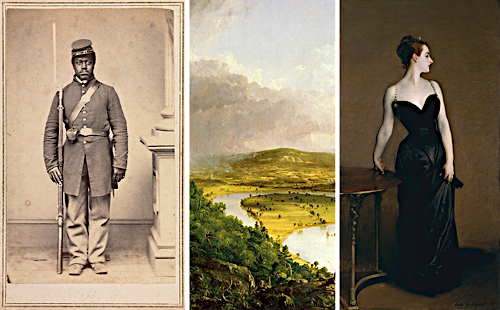Art and Life in Nineteenth-Century America

This class asks what the study of art history and American history can tell us about each other through an intensive focus on a complex period in the past. The nineteenth century saw the transformation of the United States from a rural to an industrial, urban nation; a Civil War that divided the country, Westward expansion that enlarged it, and waves of immigration and border movement that changed its population; the rise of a middle class, and the emergence of women into public and professional life. American artists and architects sought to rival their European contemporaries and eventually produced distinctive works that responded to national trends. Through hands-on research in archives and visits to see original works of art in museums and libraries, along with readings in primary-source documents and recent critical interpretations, we will examine both developments in the fine arts and the impact of historical change on the material and popular culture of everyday life in America. Among the topics to be investigated are: the role of art in creating an image of America as "nature's nation"; machine-made art and machines as art; the West as viewed from the painter's easel, the photographer's lens, and the frontier homestead; the interaction of Native American artists, Anglo settlers, and the tourist trade; the creation of Civil War monuments; parlors and the ideology of the Victorian home; mass-produced images and the dissemination of art for middle-class taste; the brooding psychology in the Gilded-Age paintings of Eakins, Homer, and Cassatt. The class will include a mandatory field trip to the Detroit Institute of Arts at no cost.
Textbooks/Other Materials: Frances Pohl, Framing America: A Social History of American Art (3rd edition) plus online course reserves. Students who need background reading may also choose to purchase any edition of John Mack Faragher et al. Out of Many vol. 1 (a U.S. History textbook) and/or Sylvan Barnet, A Short Guide to Writing about Art.
Estimated cost of Materials: $50-$100.
HISTART category for concentration distributions: D. Europe and the U.S., 4. Modern and Contemporary.